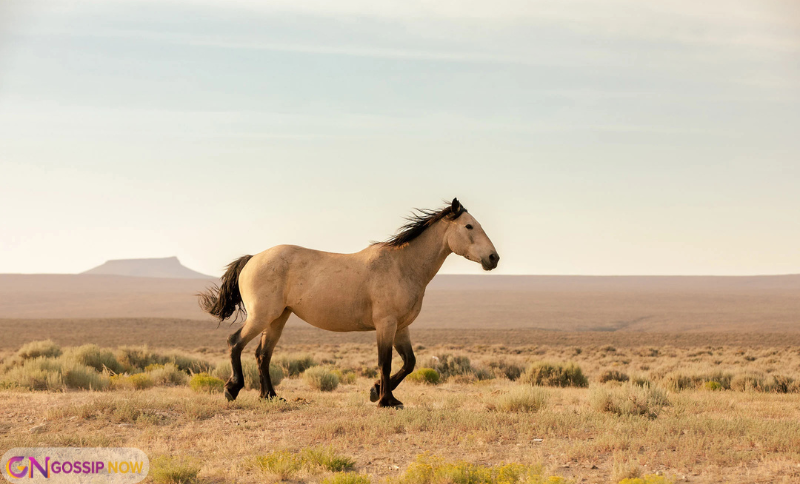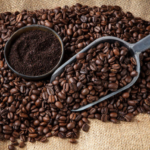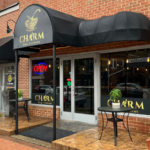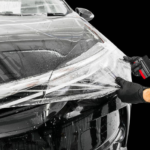When it comes to striking horse coat colors, the buckskin horse stands in a league of its own. With its golden coat and dark points, this majestic beauty often turns heads in any arena or pasture. Not only is the buckskin_horse visually stunning, but it also has a rich history and unique genetics that make it truly special.
In fact, the buckskin_horse has become one of the most desirable coat types among horse lovers around the world. Whether you’re curious about the genetics, looking for a buckskin horse for sale, or just love learning about equine colors, this guide has everything you need. As we explore the ins and outs of buckskin_horses, you’ll soon understand why these golden-coated stunners continue to gain popularity year after year.
What Is a Buckskin Horse?
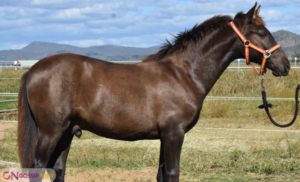
A buckskin_horse refers to an equine with a golden or tan body color paired with black points — meaning a black mane, tail, and lower legs. This beautiful coloring is not a breed but a coat color that can appear in several different horse breeds.
The Genetics Behind the Buckskin Coat
So, how does a buckskin_horse color come to be? It all comes down to genetics. The buckskin color is produced when a horse carries both:
-
A bay base coat (red body with black points)
-
One copy of the cream dilution gene
This single cream gene dilutes the red body into a golden or tan color, but it leaves the black mane, tail, and legs unchanged — resulting in that iconic buckskin look.
Types of Buckskin Horses
Just like snowflakes, not all buckskins look exactly the same. Several variations exist, and each one brings its own kind of wow factor.
1. Dark Buckskin Horse
The dark buckskin horse has a deeper, richer body color that looks more like bronze or caramel. It still features the signature black points but may appear almost chocolate in some lighting.
2. Silver Buckskin Horse
Although rare, the silver buckskin_horse combines the cream gene with a silver dilution. This gives the mane and tail a silvery, smoky appearance — making the horse look almost otherworldly.
3. Dappled Buckskin Horse
If you spot a dappled buckskin_horse, consider yourself lucky. These horses show circular, cloudy patterns (called dapples) over their golden coats. These dapples are usually more visible when the horse is in great health and good condition.
4. White Buckskin Horse
Technically, there is no true white buckskin_horse. However, some buckskins appear extremely light or faded, especially in the summer months, giving off a white or cream-like appearance.
5. Dark Gold Buckskin Horse
When a buckskin_horse has a rich, dark gold coat, it often shines in the sunlight and creates an almost metallic finish. This color variation is extremely popular in show rings and among western riders.
Buckskin Horse Breeds
Because buckskin_horse color is a genetic trait and not specific to a breed, you can find it in several types of horses. Some of the most common breeds that feature buckskin coloring include:
-
Quarter Horses
-
Mustangs
-
Tennessee Walking Horses
-
Morgan Horses
-
American Paint Horses
As long as the breed carries the bay gene and the cream dilution gene, a buckskin_horse is a possibility.
Buckskin Horse Personality Traits
While coat color doesn’t determine temperament, many owners report that their buckskin_horses are:
-
Intelligent
-
Easygoing
-
Strong and athletic
-
Versatile in different riding disciplines
Of course, the personality depends more on the breed and training rather than color alone. However, their good looks definitely add charm!
Common Uses for Buckskin Horses
Thanks to their versatility, buckskin_horses are used in a wide variety of settings. Here’s where you’ll often find them:
-
Western pleasure and rodeo events
-
Trail riding and endurance riding
-
English riding and dressage
-
Ranch work
-
Parades and photo shoots
Because of their eye-catching appearance, buckskin_horses are often featured in movies and advertisements as well.
Buckskin Horse Price: What to Expect
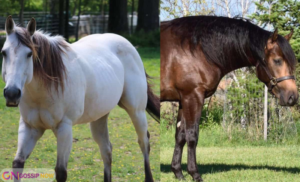 When it comes to buckskin_horse price, there’s no fixed number. However, several factors can influence how much you’ll pay:
When it comes to buckskin_horse price, there’s no fixed number. However, several factors can influence how much you’ll pay:
-
✅ Breed and bloodline
-
✅ Age and training level
-
✅ Color intensity and uniqueness
-
✅ Location and availability
On average, here’s a rough breakdown:
-
Untrained young horse: $3,000–$5,000
-
Trained riding horse: $6,000–$12,000
-
Show-quality or rare variation (like silver buckskin): $15,000 and up
So, if you’re browsing listings with “buckskin horse for sale,” make sure to look at more than just the color. Evaluate training, soundness, and temperament as well.
How to Care for a Buckskin Horse
Although caring for a buckskin_horse is similar to any other horse, their light-colored coats may require a bit more grooming to keep that signature shine. Here’s how to keep your buckskin looking its best:
-
🧼 Regular brushing to remove dust and dirt
-
🐎 Fly protection for sensitive areas
-
🧴 Use of coat-enhancing shampoos during baths
-
🥕 Proper nutrition for coat and hoof health
Moreover, always provide your horse with a clean, safe shelter and regular vet and farrier care.
Transitioning from Dun to Buckskin: Know the Difference
Although they look similar, dun horses and buckskin horses are genetically different. Here’s how to tell them apart:
| Feature | Buckskin Horse | Dun Horse |
|---|---|---|
| Gene Responsible | Cream gene | Dun gene |
| Dorsal Stripe | No (usually) | Yes (always) |
| Body Color | Gold/tan with black points | Pale with primitive marks |
| Leg Markings | Black points | May have leg barring |
Always consult a genetic test if you’re unsure. After all, correct identification is important — especially when purchasing or breeding.
Pros and Cons of Owning a Buckskin Horse
Here’s a quick breakdown to help you decide if a buckskin_horse is right for you:
✅ Pros:
-
Striking appearance that draws attention
-
Found in multiple breeds
-
Easy to resell due to high demand
-
Often strong, athletic, and versatile
❌ Cons:
-
Sometimes more expensive due to popularity
-
May sun-fade without proper protection
-
Can be mistaken for dun horses, causing confusion in breeding
Author Bio Table
| Name | Jenna Morgan |
|---|---|
| Profession | Equine Writer & Riding Instructor |
| Experience | 15+ years in horse training & care |
| Specialty | Coat color genetics & breed education |
| Location | Colorado, USA |
| Favorite Horse | Dark buckskin Quarter Horse |
Final Thoughts
To sum it all up, the buckskin_horse is much more than just a pretty face. Thanks to its unique genetic makeup, multiple color variations, and wide availability across breeds, this horse is both beautiful and functional.
Whether you’re interested in owning a dark buckskin_horse, admiring a dappled buckskin_horse, or searching online for a buckskin_horse for sale, one thing is clear: these golden-coated horses continue to capture hearts everywhere.
Because of their incredible versatility, vibrant coats, and strong presence, buckskin_horses are perfect for riders of all disciplines. So, if you’re looking to add a little golden glow to your barn, the buckskin_horse might just be the perfect choice.
FAQs
1. So, what exactly is a buckskin horse?
A buckskin_horse has a golden or tan body with black mane, tail, and lower legs, created by a cream gene on a bay coat.
2. How is a buckskin horse different from a dun horse?
Although they look alike, buckskins are diluted by the cream gene, while duns have primitive markings like a dorsal stripe caused by a different gene.
3. Where can I find a buckskin horse for sale?
You can search online equine marketplaces, visit breeders, or check auction listings — but always verify bloodlines and health.
4. What’s the average buckskin horse price?
Depending on age, training, and breed, prices typically range from $3,000 to over $15,000.
5. Can buckskin horses be registered?
Yes, absolutely! Since the color occurs in many breeds, a buckskin_horse can be registered with their respective breed associations.

